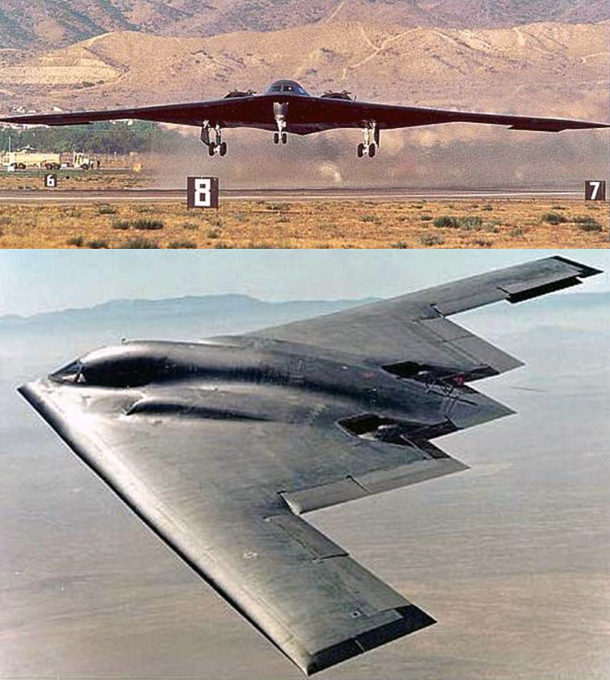
Thirty-one years ago this month, the USAF/Northrop B-2 Stealth Strategic Bomber flew for the first time. The aircrew for the B-2’s maiden trip upstairs included Northrop B-2 Division Chief Test Pilot Bruce J. Hinds (command pilot) and B-2 Combined Test Force Commander USAF Col. Richard S. Couch (co-pilot).
The B-2 traces it lineage to a variety of Northrop flying wing aircraft including the piston-powered YB-35 and jet-propelled YB-49. These 1940’s-era experimental aircraft served as important stepping stones in the evolution of large flying wing technology.
An all-wing aircraft represents an aerodynamically-optimal configuration from the standpoint of high lift, low drag and therefore high lift-to-drag ratio. These favorable aerodynamic attributes translate to high levels of range performance and load-carrying capability. In addition, the type’s high aspect ratio and slim profile provide for more favorable low observable characteristics than traditional fuselage-wing-empennage aircraft geometries.
Arguably the most challenging aspects of creating an all-wing aircraft have to do with flight control and handling qualities. The crash of the second YB-49 flying wing in June of 1948 underscored the insufficiency of aerospace technology at that time to handle these design challenges. It was not until the advent of modern flight control avionics during the 1980’s that the full potential of a flying wing aircraft would be realized.
The B-2 is only 69 feet in length, but has a wing span of 172 feet and a wing area of 5,140 square feet. Gross take-off and empty weights are 336,500 lbs and 158,000 lbs, respectively. Embedded within the wings are a quartet of fuel-efficient F118-GE-100 turbofan engines, each generating 17,300 lbs of thrust. The aircraft has a top speed of about Mach 0.85, an unrefueled range of 6,000 nautical miles and a service ceiling of 50,000 feet. Maximum ordnance load is 50,000 lbs.
B-2 AV-1 (Spirit of America; S/N 82-1066) took-off for the first time from Air Force Plant 42 in Palmdale, California on Monday, 17 July 1989. Supported by F-16 chase aircraft, the majestic flying wing flew a 2 hour 12 minute test mission which concluded with a landing at nearby Edwards Air Force Base. As a first flight precaution, the entire mission was flown with the landing gear down.
The first B-2 airframe to enter the operational inventory was AV-8, the Spirit of Missouri (S/N 88-0329). It did so on 31 March 1994. While initial plans called for a production run of 132 aircraft, only 21 B-2 airframes were actually built. With the 2008 loss of the Spirit of Kansas shortly after take-off from Andersen Air Force Base in Guam, 20 of these aircraft remain in active service today.
Whiteman Air Force Base in Missouri serves as Air Force’s home for the B-2. From there, the majestic flying wing has flown a multitude of global strike missions to deliver a variety of ordnance with pinpoint accuracy. To date, the B-2 has successfully engaged targets in Kosovo, Afghanistan, Iraq and Libya. The B-2 is truly a technological marvel and a national defense asset. As such, it may be expected to be a vital part of the Air Force’s active inventory for decades to come.
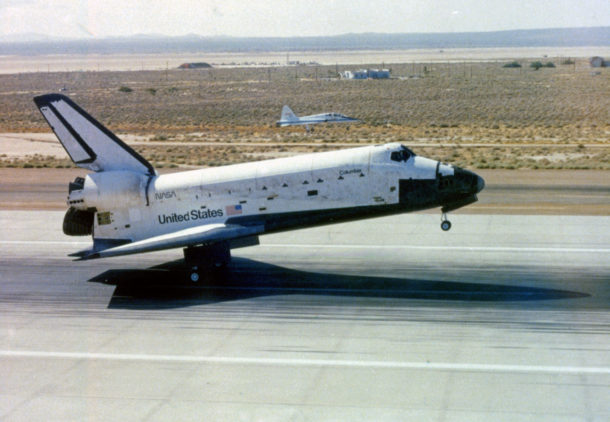
Thirty-eight years ago today, the Space Shuttle Columbia landed at Edwards Air Force Base to successfully conclude the fourth orbital mission of the Space Transportation System. Columbia’s return to earth added a special and patriotic touch to the celebration of our nation’s 206th birthday.
STS-4 was NASA’s fourth Space Shuttle mission in the first fourteen months of Shuttle orbital flight operations. The two-man crew consisted of Commander Thomas K. Mattingly, Jr. and Pilot Henry W. Hartsfield who were both making their first Shuttle orbital mission. STS-4 marked the last time that a Shuttle would fly with a crew of just two.
STS-4 was launched from Cape Canaveral’s LC-39A on Sunday, 27 June 1982. Lift-off was exactly on-time at 15:00:00 UTC. This mission stands as the first occasion in which a Space Shuttle launch would occur precisely on-time. The Columbia orbiter weighed a hefty 241,664 lbs at launch.
Mattingly and Hartsfield spent a little over seven (7) days orbiting the Earth in Columbia. The orbiter’s cargo consisted of the first Getaway Special payloads and a classified US Air Force payload of two missile launch-detection systems. In addition, a Continuous Flow Electrophoresis System (CFES) and the Mono-Disperse Latex Reactor (MLR) were flown for a second time.
The Columbia crew conducted a lightning survey using manual cameras and several medical experiments. Mattingly and Hartsfield also maneuvered the Induced Environment Contamination Monitor (IECM) using the Orbiter’s Remote Manipulator System (RMS). The IECM was used to obtain information on gases and particles released by Columbia in flight.
On Sunday, 04 July 1982, retro-fire of the Orbital Maneuvering System (OMS) engines started Columbia on its way back to Earth. Touchdown occurred on Edwards Runway 22 at 16:09:31 UTC. This landing marked the first time that an Orbiter landed on a concrete runway. (All three previous missions had landed on Rogers Dry Lake at Edwards.) Columbia made 112 complete orbits and traveled 2,537,196 nautical miles during STS-4.
The Space Shuttle was optimistically declared “operational” with the successful conduct of the first four (4) shuttle missions. President Ronald Reagan and First Lady Nancy Reagan even greeted the returning STS-4 flight crew on the tarmac.
However, as space history has taught us, manned spaceflight still comes with a level of risk and danger that exceeds that of military and commercial aircraft operations. Despite its unparalleled accomplishments and enduring legacy, the Space Shuttle was never operational in the true and desired sense.
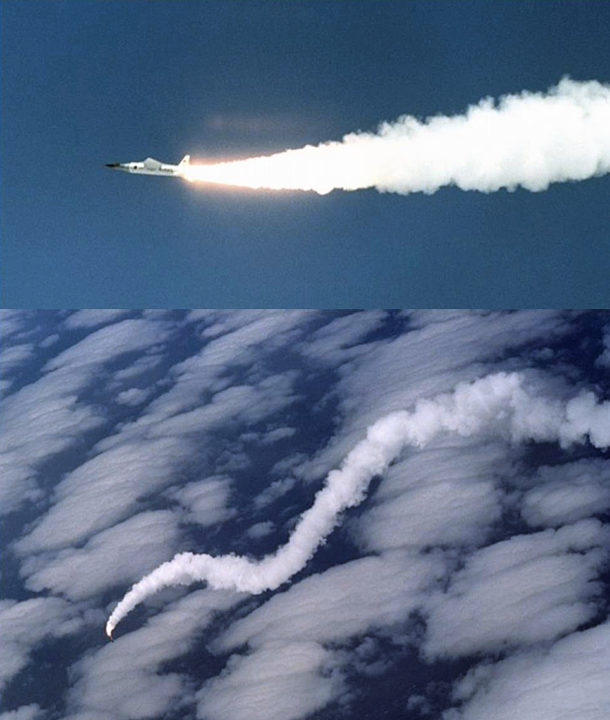
Nineteen years ago this month, the first NASA X-43A airframe-integrated scramjet flight research vehicle was launched from a B-52 carrier aircraft high over the Pacific Ocean. The inaugural mission of the HYPER-X Flight Project came to an abrupt end when the launch vehicle departed controlled flight while passing through Mach 1.
In 1996, NASA initiated a technology demonstration program known as HYPER-X (HX). The central goal of the HYPER-X Program was to successfully demonstrate sustained supersonic combustion and thrust production of a flight-scale scramjet propulsion system at speeds up to Mach 10.
Also known as the HYPER-X Research Vehicle (HXRV), the X-43A aircraft was a scramjet test bed. The aircraft measured 12 feet in length, 5 feet in width, and weighed close to 3,000 pounds. The X-43A was boosted to scramjet take-over speeds with a modified Orbital Sciences Pegasus rocket booster.
The combined HXRV-Pegasus stack was referred to as the HYPER-X Launch Vehicle (HXLV). Measuring approximately 50 feet in length, the HXLV weighed slightly more than 41,000 pounds. The HXLV was air-launched from a B-52 mothership. Together, the entire assemblage constituted a 3-stage vehicle.
The first flight of the HYPER-X program took place on Saturday, 02 June 2001. The flight originated from Edwards Air Force Base, California. Using Runway 04, NASA’s venerable B-52B (S/N 52-0008) started its take-off roll at approximately 19:28 UTC. The aircraft then headed for the Pacific Ocean launch point located just west of San Nicholas Island.
At 20:43 UTC, the HXLV fell away from the B-52B mothership at 24,000 feet. Following a 5.2 second free fall, the rocket motor lit and the HXLV started to head upstairs. Disaster struck just as the vehicle accelerated through Mach 1. That’s when the rudder locked-up. The launch vehicle then pitched, yawed and rolled wildly as it departed controlled flight. Control surfaces were shed and the wing was ripped away. The HXRV was torn from the booster and tumbled away in a lifeless state. All airframe debris fell into the cold Pacific Ocean far below.
The mishap investigation board concluded that no single factor caused the loss of HX Flight No. 1. Failure occurred because the vehicle’s flight control system design was deficient in a number of simulation modeling areas. The result was that system operating margins were overestimated. Modeling inaccuracies were identified primarily in the areas of fin system actuation, vehicle aerodynamics, mass properties and parameter uncertainties. The flight mishap could only be reproduced when all of the modeling inaccuracies with uncertainty variations were incorporated in the analysis.
The X-43A Return-to-Flight effort took almost 3 years. Happily, the HYPER-X Program hit paydirt twice in 2004. On Saturday, 27 March 2004, HX Flight No. 2 achieved scramjet operation at Mach 6.83 (almost 5,000 mph). This historic accomplishment was eclipsed by even greater success on Tuesday, 16 November 2004. Indeed, HX Flight No. 3 achieved sustained scramjet operation at Mach 9.68 (nearly 7,000 mph).
The historic achievements of the HYPER-X Program went largely unnoticed by the aerospace industry and the general public. For its part, NASA did not do a very good job of helping people understand the immensity of what was accomplished. Even the NASA Administrator appeared indifferent to the scramjet program. While he attended an X-Prize flight by Scaled-Composites’ SpaceShipOne right up the street at the Mojave Spaceport, he did not see fit to attend either of that year’s historic scramjet flights that originated right down the road at Edwards Air Force base.
However, it was the loss of the Space Shuttle Columbia on STS-107 in February of 2003 that doomed HX even before the program’s first successful flight. Everything changed for NASA when Columbia and its crew was lost. The space agency’s overriding focus and meager financial resources went into the Shuttle Return-to-Flight and Phase-Out efforts. NASA’s aeronautical and access-to-space arms were especially hard hit.
If timing is everything as some insist, then the HYPER-X Program was really the victim of bad timing. It is both intriguing and distressing to ponder what would have been the case if HX Flight No. 1 had been successful. The likely answer is that at least one of the anticipated follow-on scramjet flight research programs (i.e., X-43B, X-43C, and X-43D) would have been developed and flown. Thanks to Murphy’s ubiquitous influence, we’ll never know.
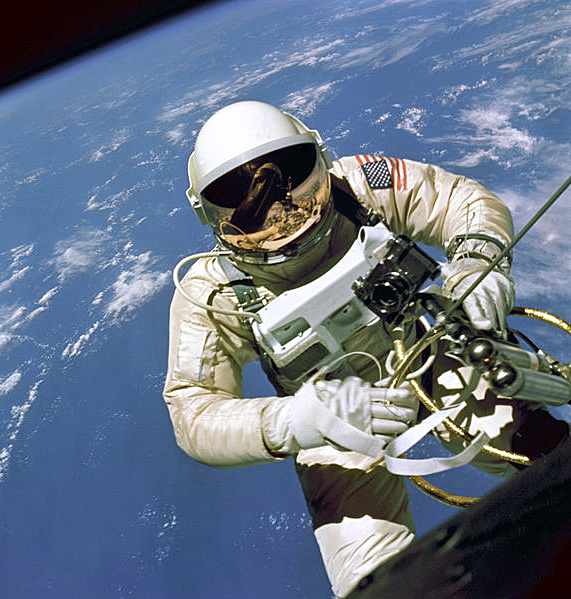
Fifty-five years ago this month, Gemini Astronaut Edward H. White II became the first American to perform what in NASA parlance is referred to as an Extra Vehicular Activity (EVA). In everyday terms, it is referred to as a “spacewalk”.
White, Mission Commander James A. McDivitt and their Gemini spacecraft were launched into low Earth orbit by a two-stage Titan II launch vehicle from LC-19 at Cape Canaveral Air Force Station, Florida. The Gemini-Titan IV (GT-4) mission clock started at 15:15:59 UTC on Thursday, 03 June 1965.
On the third orbit, less than five hours after launch, White opened the Gemini IV starboard hatch. He stood in his seat and mounted a camera to capture his historic space stroll. He then cast-off from Gemini IV and became a human satellite.
White was tethered to Gemini IV via a 15-foot umbilical that provided oxygen and communications to his EVA suit. A gold-plated visor on his helmet protected his eyes from the searing glare of the sun. The spacewalking astronaut was also outfitted with a hand-held maneuvering unit that used compressed oxygen to power its small thrusters. And, like any good tourist, White also took along a camera to photograph the event.
Ed White had the time of his all-too-brief life in the 22 minutes that he walked in space. The sight of the earth, the spacecraft, the sun, the vastness of space, the freedom of movement all combined to make him excitedly exclaim at one point, “I feel like a million dollars!”.
Presently, it was time to get back into the spacecraft. But, couldn’t he just stay outside a little longer? NASA Mission Control and Commander McDivitt were firm. It was time to get back in; now! He grudgingly complied with the request/order, plaintively lamenting: “It’s the saddest moment of my life!”
As Ed White got back into his seat, he and McDivitt struggled to lock the starboard hatch. Both men were exhausted, but ebullient as they mused about the successful completion of America’s first space walk.
Gemini IV would eventually orbit the Earth 62 times before splashing-down in the Atlantic Ocean at 17:12:11 GMT on Sunday, 07 June 1965. The 4-day mission was another milestone in America’s quest for the moon.
The mission was over and yet Ed White was still a little tired. But then, that was really quite easy to understand. In the time that he was spacewalking outside the spacecraft, Gemini IV had traveled almost a third of the way around the Earth.
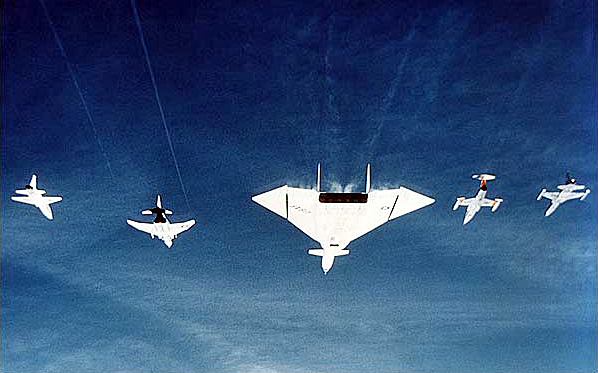
Fifty-four years ago today, XB-70A Valkyrie Air Vehicle No. 2 (62-0207) and a NASA F-104N Starfighter (N813NA) were destroyed following a midair collision near Barstow, CA. USAF Major Carl S. Cross and NASA Chief Test Pilot Joseph A. Walker perished in the tragedy.
On Wednesday, 08 June 1966, XB-70A Valkyrie Air Vehicle No. 2 took-off from Edwards Air Force Base, California for the final time. The crew for this flight included aircraft commander and North American test pilot Alvin S. White and right-seater USAF Major Carl S. Cross. White would be making flight No. 67 in the XB-70A while Cross was making his first. For both men, this would be their final flight in the majestic Valkyrie.
In the past several months, Air Vehicle No. 2 had set speed (Mach 3.08) and altitude (74,000 feet) records for the type. But on this fateful day, the mission was a simple one; some minor flight research test points and a photo shoot.
The General Electric Company, manufacturer of the massive XB-70A’s YJ93-GE-3 turbojets, had received permission from Edwards USAF officials to photograph the XB-70A in close formation with a quartet of other aircraft powered by GE engines. The resulting photos were intended to be used for publicity.
The mishap formation, consisting of the XB-70A, a T-38A Talon (59-1601), an F-4B Phantom II (BuNo 150993), an F-104N Starfighter (N813NA), and an F-5A Freedom Fighter (59-4898), was in position at 25,000 feet by 0845. The photographers for this event, flying in a GE-powered Gates Learjet Citation (N175FS) stationed about 600 feet to the left and slightly aft of the formation, began taking photos.
The photo session was planned to last 30 minutes, but went 10 minutes longer to 0925. Then at 0926, just as the formation aircraft were starting to leave the scene, the frantic cry of Midair! Midair Midair! came over the communications network.
Somehow, the NASA F-104N, piloted by NASA Chief Test Pilot Joe Walker, had collided with the right wing-tip of the XB-70A. Walker’s out-of-control Starfighter then rolled inverted to the left and sheared-off the XB-70A’s twin vertical tails. The F-104N fuselage was severed just behind the cockpit and Walker died instantly in the terrifying process.
Curiously, the XB-70A continued on in steady, level flight for about 16 seconds despite the loss of its primary directional stability lifting surfaces. Then, as White attempted to control a roll transient, the XB-70A rapidly departed controlled flight.
As the doomed Valkyrie torturously pitched, yawed and rolled, its left wing structurally failed and fuel spewed furiously from its fuel tanks. White was somehow able to eject and survive. Cross never left the stricken aircraft and rode it down to impact just north of Barstow, California.
A mishap investigation followed and (as always) responsibility (blame) for the mishap was assigned and new procedures implemented. However, none of that changed the facts that on this, the Blackest Day at Edwards Air Force Base, American aviation lost two of its best men and aircraft in a flight mishap that was, in the final analysis, preventable.

Nineteen years ago today, the first NASA X-43A airframe-integrated scramjet flight research vehicle was launched from a B-52 carrier aircraft high over the Pacific Ocean. The inaugural mission of the HYPER-X Flight Project came to an abrupt end when the launch vehicle departed controlled flight while passing through Mach 1.
In 1996, NASA initiated a technology demonstration program known as HYPER-X (HX). The central goal of the HYPER-X Program was to successfully demonstrate sustained supersonic combustion and thrust production of a flight-scale scramjet (Supersonic Combustion RAMJET) propulsion system at speeds up to Mach 10.
Also known as the HYPER-X Research Vehicle (HXRV), the X-43A aircraft was a scramjet test bed. The aircraft measured 12 feet in length, 5 feet in width, and weighed close to 3,000 pounds. The X-43A was boosted to scramjet take-over speeds with a modified Orbital Sciences Pegasus rocket booster.
The combined HXRV-Pegasus stack was referred to as the HYPER-X Launch Vehicle (HXLV). Measuring approximately 50 feet in length, the HXLV weighed slightly more than 41,000 pounds. The HXLV was air-launched from a B-52 mothership. Together, the entire assemblage constituted a 3-stage vehicle.
The first flight of the HYPER-X program took place on Saturday, 02 June 2001. The flight originated from Edwards Air Force Base, California. Using Runway 04, NASA’s venerable B-52B (S/N 52-0008) started its take-off roll at approximately 19:28 UTC. The aircraft then headed for the Pacific Ocean launch point located just west of San Nicholas Island.
At 20:43 UTC, the HXLV fell away from the B-52B mothership at 24,000 feet. Following a 5.2 second free fall, the rocket motor lit and the HXLV started to head upstairs. Disaster struck just as the vehicle accelerated through Mach 1. That’s when the rudder locked-up. The launch vehicle then pitched, yawed and rolled wildly as it departed controlled flight. Control surfaces were shed and the wing was ripped away. The HXRV was torn from the booster and tumbled away in a lifeless state. All airframe debris fell into the cold Pacific Ocean far below.
The mishap investigation board concluded that no single factor or so-called “smoking gun” cause was responsible for the loss of HX Flight No. 1. Failure occurred because the vehicle’s flight control system design was deficient in a number of simulation modeling areas. The result was that system operating margins were overestimated. Modeling inaccuracies were identified primarily in the areas of fin system actuation, vehicle aerodynamics, mass properties and parameter uncertainties. The flight mishap could only be reproduced when all of the modeling inaccuracies with uncertainty variations were incorporated in the analysis.
The X-43A Return-to-Flight effort took almost 3 years. Happily, the HYPER-X Program hit pay dirt twice in 2004. On Saturday, 27 March 2004, HX Flight No. 2 achieved scramjet operation at Mach 6.83 (almost 5,000 mph). This historic accomplishment was eclipsed by even greater success on Tuesday, 16 November 2004. Indeed, HX Flight No. 3 achieved sustained scramjet operation at Mach 9.68 (nearly 7,000 mph).
The historic achievements of the HYPER-X Program went largely unnoticed by the aerospace industry and the general public. For its part, NASA did not do a very good job of helping people understand the immensity of what was accomplished. Even the NASA Administrator appeared indifferent to the pioneering scramjet program. While he attended an X-Prize flight by Scaled-Composites’ SpaceShipOne right up the street at the Mojave Spaceport, he did not see fit to attend either of that year’s history-making scramjet flights that originated right down the road at Edwards Air Force base.
However, it was the loss of the Space Shuttle Columbia on STS-107 in February of 2003 that doomed HX even before the program’s first successful flight. Everything changed for NASA when Columbia and her crew was lost. The space agency’s overriding focus and meager financial resources went into the Shuttle Return-to-Flight and Phase-Out efforts. NASA’s aeronautical and access-to-space arms were especially hard hit.
If timing is everything as some insist, then the HYPER-X Program was really the victim of bad timing. It is both intriguing and distressing to ponder what would have been the case if HX Flight No. 1 had been successful. The likely answer is that at least one of the anticipated follow-on scramjet flight research programs (i.e., X-43B, X-43C, and X-43D) would have been developed and flown. Thanks to Murphy’s ubiquitous influence, we’ll never know.
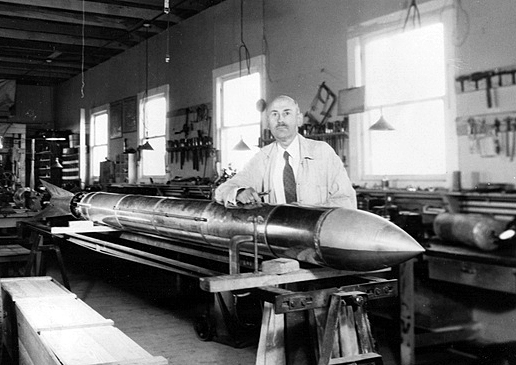
Eighty-five years ago this month, pioneering rocket scientist Robert H. Goddard and staff fired a liquid-fueled rocket to a record altitude of 7,500 feet above ground level. The record-setting flight took place at Roswell, New Mexico.
Robert Hutchings Goddard was born in Worcester, Massachusetts on Thursday, 05 October 1882. He was enamored with flight, pyrotechnics, rockets and science fiction from an early age. By the time he was 17, Goddard knew that his life’s work would combine all of these interests.
Goddard was a sickly youth, but spent his well moments as a voracious reader of all manner of science-oriented literature. He graduated in 1904 from South High School in Worcester as the valedictorian of his class. He matriculated at Worcester Polytechnic and graduated with a Bachelor of Science degree in physics in 1908. A Master of Science degree and Ph.D. from Worcester’s Clark University followed in 1910 and 1911, respectively.
Goddard spent the next eight years of his life working on numerous propulsion and rocket-related projects. Then, in 1919, he published his now-famous scientific treatise entitled A Method of Reaching Extreme Altitudes. In that paper, the press glommed on to Goddard’s passing mention that a multi-staged rocket could conceivably fly all the way to the Moon.
Goddard was roundly ridiculed for his fanciful prognostications about Moon flight. The New York Times was especially derogatory in its estimation of Goddard’s ideas and accused him of junk science. A Times editorial even criticized Goddard for his ”misconception” that a rocket could produce thrust in the vacuum of space.
Even the U.S. government largely ignored Goddard. This scornful treatment to which Goddard was subject hurt him profoundly. So much so that he spent the remainder of his life alienated from the denizens of the press as well as the dolts of governmental employ.
Despite the blow to his professional reputation, Goddard resolutely pressed on with his rocket research. Indeed, after more that five years of intense development effort, Goddard and his staff launched the first liquid-fueled rocket on Tuesday, 16 March 1926 in Auburn, Massachusetts. The flight duration was short (2.5 seconds) and the peak altitude tiny (41 feet), but Goddard proved that liquid rocket propulsion was feasible.
Goddard’s liquid-fueled rocket testing would ultimately lead him from the countryside of New England to the desert of the Great South West. With financial support from Harry Guggenheim and the public backing of Charles Lindbergh, Goddard transferred his testing activities to Roswell, New Mexico in 1930. He would continue liquid-fueled rocket testing there until May 1941.
On Friday, 31 May 1935, experimental rocket flight A-8 took to the air from Goddard’s Roswell, New Mexico test site at 1430 UTC. Roughly 15 feet in length and weighing approximately 90 pounds at lift-off, the 9-inch diameter A-8 achieved a maximum altitude of 7,500 feet (1.23 nautical miles) above the desert floor. Only a flight in March of 1937 would go higher (9,000 feet).
Robert Goddard was ultimately credited with 214 U.S. patents for his rocket development work. Only 83 were awarded in his life time. His far-reaching inventions included rocket nozzle design, regeneratively cooled rocket engines, turbo-pumps, thrust vector controls, gyroscopic control systems and more.
Goddard died at the age of 62 from throat cancer in Baltimore, Maryland on Friday, 10 August 1945. Many years would pass before the full import of his accomplishments was comprehended. Then, the posthumously-bestowed recognition came in torrents. In 1959, Congress issued a special gold medal in Goddard’s honor. The Goddard Spaceflight Center was so named by NASA in 1959 as well. Many more such bestowals followed.
Perhaps the most meaningful of the recognitions ever accorded Robert Hutchings Goddard occurred 24 years after his passing. It was in connection with the first manned lunar landing in July of 1969. And it was poetic not only in terms of its substance and timing, but more particularly in light of the source from whence the recognition came.
A terse statement in the New York Times corrected a long-standing injustice. It read: “Further investigation and experimentation have confirmed the findings of Issac Newton in the 17th century, and it is now definitely established that a rocket can function in a vacuum as well as in an atmosphere. The Times regrets the error.”
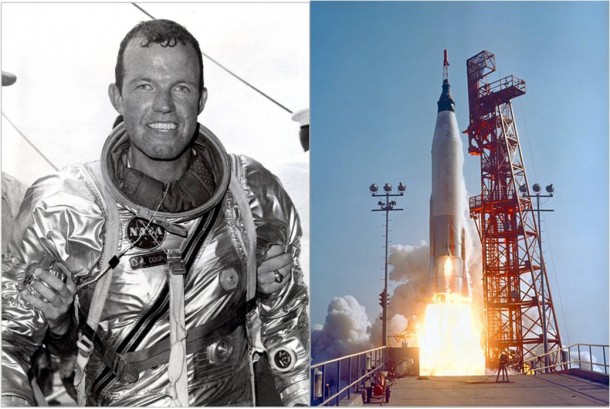
Fifty-seven years ago this month, NASA Astronaut Leroy Gordon Cooper successfully returned to earth after completing 22 orbits of the home planet. Designated Mercury-Atlas No. 9 (MA-9), Cooper’s flight was the final orbital space mission of the fabled Mercury Program.
Cooper’s eventful space mission began with lift-off from Cape Canaveral’s LC-14 at 13:04 hours UTC on Wednesday, 15 May 1963. Splashdown of his Faith 7 spacecraft occurred 70 miles southeast of Midway Island in the Pacific Ocean on Thursday, 16 May 1963. Mission total elapsed time was 34 hours 19-minutes 49-seconds.
While the first 19 orbits of the MA-9 mission were mostly unremarkable, the final three orbits severely tested Cooper’s mettle and piloting skills.
By the time that he manually initiated ripple-firing of the retro motors at the end of the 22nd orbit, Cooper was flying a dead spacecraft. The electrical system was not functioning, the environmental control system was saturated with carbon dioxide, and even the mission clock was inoperative. Temperatures in the spacecraft exceeded 130F.
Cooper had to align his spacecraft for retro-fire using the horizon as a reference, used a watch for timing, and manually operated the reaction control system to counter dangerous spacecraft oscillations during the retro burn.
Cooper also manually controlled Faith 7 during entry and initiated deployment of the drogue and main parachutes.
Incredibly, Cooper landed within 5 miles of the recovery ship USS Kearsarge. In so doing, he established the record for the most accurate landing in the Mercury Program. Gordon Cooper was the last American astronaut to orbit the Earth alone.
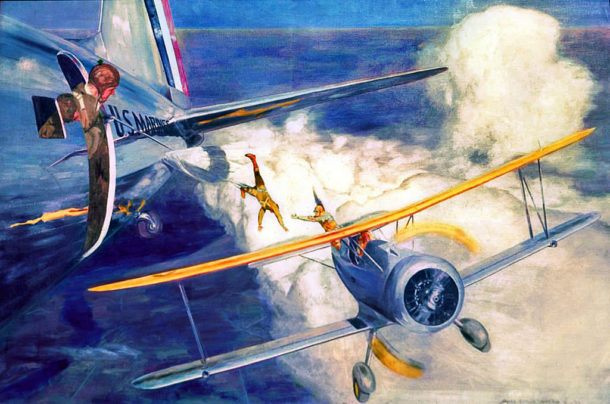
Seventy-nine years ago today, U.S. Marine Lieutenant Walter S. Osipoff was dramatically rescued after his parachute became entangled with the tail wheel of his jump aircraft. Flying another airplane, U.S. Navy Lieutenant William W. Lowrey and Chief Machinist’s Mate John R. McCants rendezvoused with the jump aircraft, miraculously freed the dangling parachutist, and returned him safely to the ground.
Thursday, 15 May 1941 dawned bright and sunny at Naval Air Station, San Diego, California. On this particular day, jumpmaster Walter S. Osipoff was responsible for training a contingent of novice military parachutists. Accordingly, Osipoff and his young charges boarded a U.S. Navy R2D-1 transport with Captain Harold Johnson at the controls. The mission involved parachuting men and materials over a drop zone in similitude of actual combat operations. After everyone and everything else had exited the aircraft, the plan called for Osipoff to jump.
What happened next is one of those curious occurrences that can only be attributed to Murphy’s Law. While heaving one of the last equipment bags overboard, Osipoff’s rip cord was accidentally pulled and his parachute deployed as he stood in the aircraft’s hatchway. Despite his determined resistance, Osipoff was unceremoniously ripped out of the aircraft and into the 110-mph airstream.
Unfortunately, Murphy was not done with Osipoff. Rather than clearing the aircraft and parachuting to safety, Osipoff’s parachute and shroud lines became entangled with the tail wheel. The Marine was now in very serious trouble. He became a human whirligig helplessly twirling at the end of a snarled conglomeration of shroud lines, static cable, and rip cord. The aircraft crew were unable to reel him in and he could not break free of his connection to the tail wheel. Naturally, the jump aircraft was not equipped with a radio and was low on fuel.
Pilot Johnson descended to a couple of hundred feet above the earth in the hope that someone on the ground would see Osipoff’s plight and somehow quickly find a way to rescue him. While many on the ground silently beheld the stark spectacle in the air, it was William Lowrey and John McCants who answered the unspoken call to save their fellow airman. On their own initiative, they quickly commandeered a nearby U.S. Navy SOC-1 Sea Gull observation aircraft and took to the air. Just how they would rescue Osipoff from his predicament they did not know.
With Lowrey at the controls and McCants in the back seat, the SOC-1 caught up with the R2D-1 at around 300 feet above ground level. Lowrey maneuvered his aircraft into a trail position with Osipoff in clear sight above and ahead of him. What Lowrey and McCants saw was not encouraging. Apparently, Osipoff’s chest strap had broken due to the high aerodynamic and inertial loads to which he had been subjected. Further, his leg straps had slipped and were now around his ankles. The rescuers also noticed that most of Osipoff’s shroud lines had snapped.
What happened next constitutes a miracle in the eyes of many who witnessed Osipoff’s rescue that day. Using hand signals, Lowrey directed Johnson to ascend to 3,000 feet above ground level and head out over the ocean where the air would be smoother. Lowrey carefully maneuvered his aerial steed perilously close to both Osipoff and the R2D-1. The husky McCants, military knife in hand, stood up in the rear cockpit and felt for Osipoff as the two aircraft performed a life-and-death ballet while flying in a much-too-close formation.
As Lowrey brought the SOC-1 uncomfortably close to the dangling Osipoff, McCants reached up and grabbed the stricken parachutist. The two men held on to each other for dear life. While his head ended up in the rear cockpit, Osipoff’s body was sprawled across the top of the fuselage forward of the rear seat. McCants could see that blood was dripping from Osipoff’s helmet and that the man was likely in a state of shock. But presently, McCants had a more immediate problem to solve. How could he simultaneously hold onto Osipoff and cut away the airman’s entanglements? In the next moment, the solution to this dilemma was providentially provided.
As Lowrey struggled to maintain close proximity with the R2D-1, the bumpy air caused the venerable SOC-1 to suddenly jump upward a few feet. In doing so, the type’s propeller fortuitously cut through Osipoff’s tangled shroud lines. This freed Osipoff from his seemingly intractable situation. For good measure, the observation aircraft’s propeller also cut about 12 inches off of the jump aircraft’s tail cone! No problem. The propeller and tail cone could be replaced.
If you thought that Murphy had already wrought havoc enough during this unlikely incident, you might consider what happened next. Rather than simply falling away, the parachute and shroud lines which had been severed by the SOC-1’s propeller somehow managed to drape themselves over the rudder of the aircraft. This presented Lowrey with one last piloting challenge. That is, land his aircraft with (1) limited directional control due to a fouled rudder, (2) an injured man half in and half out of the aircraft, and (3) an aft center-of-gravity occasioned by having three men onboard. Happily, Lowrey was equal to this moment as well. Thirty-three minutes after the ordeal began, the SOC-1 and her crew safely recovered to the airfield at North Island. Sorry Murphy; you tried.
Walter Osipoff spent 6-months in the hospital. Among his many injuries, he sustained several broken ribs and 3 fractured vertebrae. He recovered completely and went on to spend a long and illustrious career in the Marine Corps. Osipoff was a tough guy. While others were afraid for him to return to parachute jumping, Osipoff clearly was not. He was made of sterner stuff than most.
William Lowrey and John McCants each received the Navy’s Distinguished Flying Cross for their heroic efforts on that spring day so long ago. In tribute to them, we here repeat the concluding words of their citations: “This [action] is considered one of the most brilliant and daring rescues within the annals of our Naval history. The skill, courage, initiative, and resourcefulness displayed by Lieutenant Lowrey and Aviation Chief Machinist’s Mate McCants in effecting the rescue of Lieutenant Osipoff at the imminent risk of their lives were in keeping with the highest traditions of the Naval Service.”
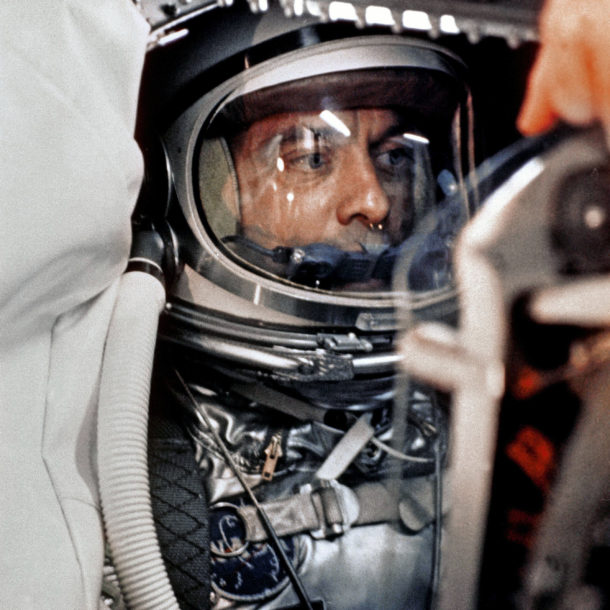
Fifty-nine years ago today, United States Navy Commander Alan Bartlett Shepard, Jr. became the first American to be launched into space. Shepard named his Mercury spacecraft Freedom 7.
Officially designated as Mercury-Redstone 3 (MR-3) by NASA, the mission was America’s first true attempt to put a man into space. MR-3 was a sub-orbital flight. This meant that the spacecraft would travel along an arcing parabolic flight path having a high point of about 115 nautical miles and a total range of roughly 300 nautical miles. Total flight time would be about 15 minutes.
The Mercury spacecraft was designed to accommodate a single crew member. With a length of 9.5 feet and a base diameter of 6.5 feet, the vehicle was less than commodious. The fit was so tight that it would not be inaccurate to say that the astronaut wore the vehicle. Suffice it to say that a claustrophobic would not enjoy a trip into space aboard the spacecraft.
Despite its diminutive size, the 2,500-pound Mercury spacecraft (or capsule as it came to be referred to) was a marvel of aerospace engineering. It had all the systems required of a space-faring craft. Key among these were flight attitude, electrical power, communications, environmental control, reaction control, retro-fire package, and recovery systems.
The Redstone booster was an Intermediate Range Ballistic Missile (IRBM) modified for the manned mission. The Redstone’s up-rated A-7 rocket engine generated 78,000 pounds of thrust at sea level. Alcohol and liquid oxygen served as propellants. The Mercury-Redstone combination stood 83 feet in length and weighed 66,000 pounds at lift-off.
On Friday, 05 May 1961, MR-3 and her one man crew stood poised for launch from Cape Canaveral’s Launch Complex 5. However, as was so often the case in the early days of manned spaceflight, there were numerous glitch-related holds in the countdown. Strapped into his seat and with the hatch bolted shut, Shepard had to patiently endure hours of waiting while each glitch was resolved. In fact, the astronaut had to wait so long that he was finally forced to relieve himself within his spacesuit. When yet another glitch threatened to further delay or cancel the launch, Shepard angrily barked at flight controllers. “Fix your little problem and light this candle!”
The Redstone candle was finally lit and Freedom Seven lifted-off at 14:34:13 UTC. Alan Shepard went to work quickly calling out various spacecraft parameters and mission events. The astronaut would experience a maximum acceleration of 6.5 g’s on the ride upstairs. Nearing apogee, Shepard manually controlled Freedom 7 in all 3 axes. In doing so, he positioned the capsule in the required 34-degree nose-down attitude. Retro-fire occurred on-time and the retro package was jettisoned without incident. Shepard then pitched the spacecraft nose to 14 degrees above the horizon preparatory to reentry into the earth’s atmosphere.
Reentry forces quickly built-up on the plunge back into the atmosphere with Shepard enduring a maximum deceleration of 11.6 g’s. He had trained for more than 12 g’s prior to flight. At 21,000 feet, a 6-foot drogue chute was deployed followed by the 63-foot main chute at 10,000 feet. Freedom 7 splashed-down in the Atlantic Ocean 15 minutes and 28 seconds after lift-off.
Following splashdown, Shepard egressed Freedom 7 and was retrieved from the ocean’s surface by a recovery helicopter. Both he and Freedom 7 were safely onboard the carrier USS Lake Champlain within 11 minutes of landing. During his brief flight, Shepard had reached a maximum speed of 5,180 mph, flown as high as 116.5 nautical miles and traveled 302 nautical miles downrange.
The flight of Freedom 7 had much the same effect on the Nation as did Lindbergh’s solo crossing of the Atlantic in 1927. However, in light of the Cold War fight against the world-wide spread of Soviet communism, Shepard’s flight arguably was more important. Indeed, Alan Shepard became the first of what Tom Wolfe called in his classic book The Right Stuff, the American single combat warrior.
For his heroic MR-3 efforts, Alan Shepard was awarded the Distinguished Service Medal by an appreciative nation. In February 1971, Alan Shepard walked on the surface of the Moon as Commander of Apollo 14. He was the lone member of the original Mercury Seven astronauts to do so. Shepard was awarded the Congressional Space Medal of Freedom in 1978.
Alan Shepard succumbed to leukemia in July of 1998 at the age of 74. In tribute to this American space hero, naval aviator and US Naval Academy graduate, Alan Shepard’s Freedom 7 spacecraft now resides in a place of honor at the United States Naval Academy in Annapolis, Maryland.









